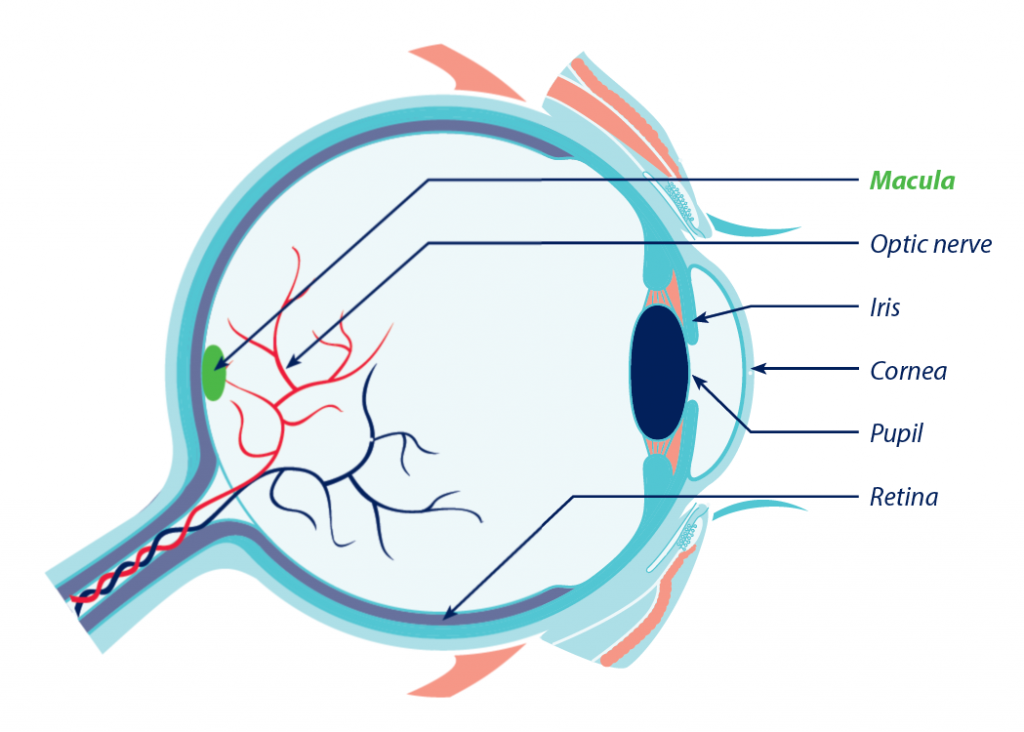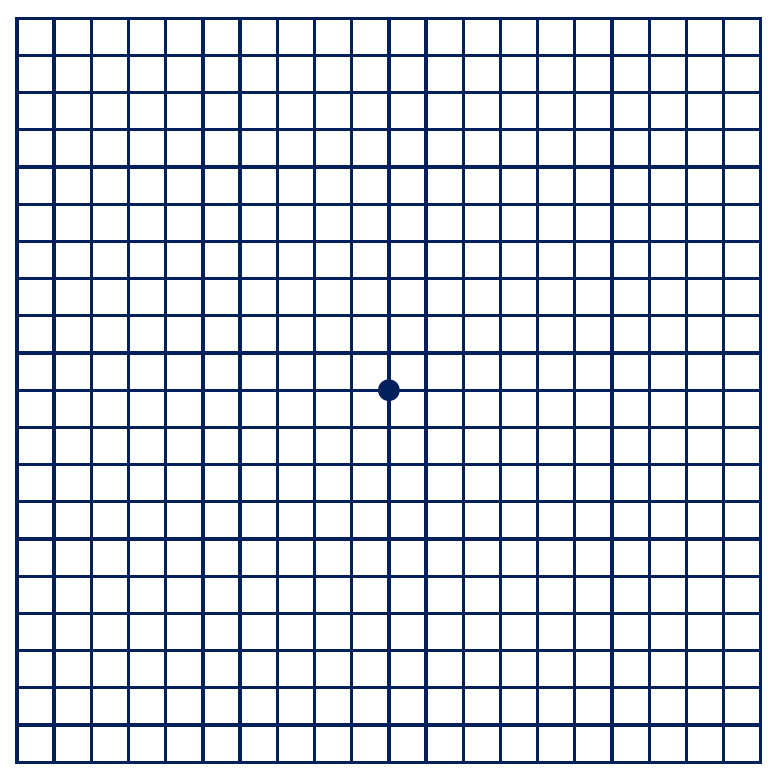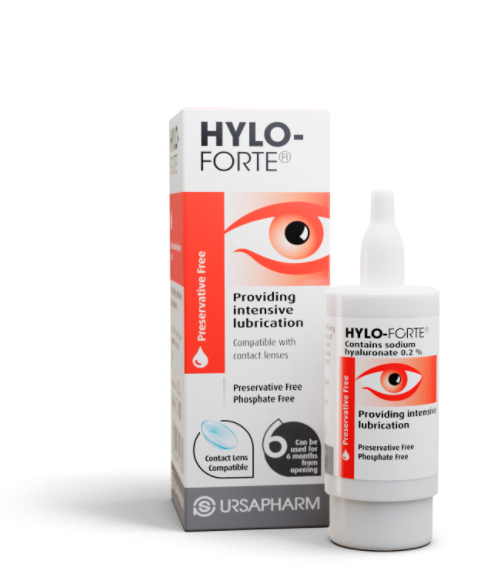AMD affects a part of the retina at the back of your eye, called the macula. AMD occurs when there is a breakdown of the macula, which prevents it from functioning properly. This leads to problems with your central vision and can make some everyday tasks and activities such as reading, driving and recognising faces, difficult.

The Macula
The retina is an important tissue that lines the back of your eye. When light enters your eye, it is focused onto the retina. Special light-sensitive cells called photoreceptor cells, detect this light and send signals to the brain, which interprets them as images.
The macula is a tiny part of the retina which is very important for our central vision, colour vision and the fine details that we see.
When someone develops AMD, the photoreceptor cells in the macular area become damaged and stop working as well as they should.
There are 2 types of AMD…
Dry AMD is the more common type of AMD. It develops very slowly and causes a gradual change in your central vision.
The early stages of Dry AMD have no symptoms and can only be detected through an eye test. Therefore, regular eye tests by an eye care professional are very important.
Dry AMD is characterised by a loss of central vision. It is associated with an accumulation of small, yellowish deposits called drusen, coupled with the thinning and breakdown of the macula.
Dry AMD can progress into an advanced form of AMD. Sometimes abnormal blood vessels begin to leak, leading to Wet AMD.
Wet AMD is a less common form of AMD, but can develop more quickly and cause severe sight loss.
Wet AMD is caused by abnormal growth and bleeding of blood vessels in the eye. This leads to scarring of the macula and can result in a sudden change in your central vision such as images appearing distorted, or objects looking smaller than normal.
Although Wet AMD can develop quickly, it is treatable if diagnosed early. Current treatments include injections of a medication (referred to as anti-VEGF therapy) into
the eye.
Symptoms of Dry AMD
Dry AMD can cause changes in your central vision, which can affect your ability to carry out day-to-day activities. Some symptoms you may notice include:
- – Straight lines such as door frames appearing wavy or distorted
- – A smudge or shadow appearing in your field of vision
- – Difficulty in reading small print, even with glasses
- – Difficulty in recognising or distinguishing faces
- – Poor recognition of colours or colours beginning to fade
- – Decreased levels of vision in low lighting or darkness
- – Glare in bright light
What does AMD look like?
The breakdown of the macula leads to the central vision being affected by distortion, blurriness, dark areas
and indistinct images. AMD can result in loss of central vision.


(early stage AMD)

Causes of Dry AMD
Dry AMD is caused by numerous genetic and environmental factors, such as:
Diagnosis of AMD
AMD testing is carried out by an Optometrist or Ophthalmologist and may include:
Risk factor assessment
Reviewing family history and causal environmental factors.
Amsler grid testing
The Amsler grid is a grid of horizontal and vertical lines
used to monitor a person’s central vision.
Optical Coherence Tomography (OCT)
OCT is a non-invasive imaging test. OCT uses light waves to take cross-section pictures of your retina.
Fundus imagery
Fundus is also non-invasive photography of the back of the eye to allow development and progression of AMD to be reliably monitored.
Advice & treatment of Dry AMD
There is currently no treatment that can reverse the damage seen in Dry AMD. Early detection is important to potentially reduce the risk of AMD getting worse and to protect your sight.
1. Nutritional supplements
Studies have shown that a combination of vitamins and antioxidants may help reduce the risk of progression of early Dry AMD to late-stage Dry AMD. Supplements containing Vitamins C and E, Zinc and Copper, and Lutein and Zeaxanthin are recommended. To find what supplements may work best for you and your condition, speak to your healthcare professional.








